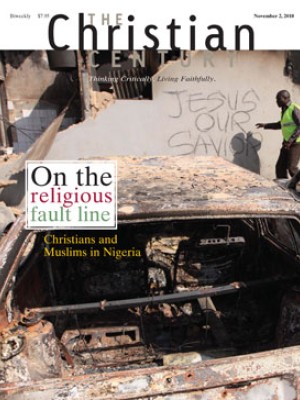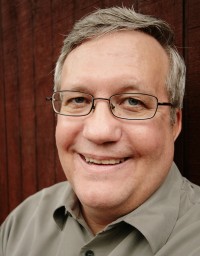Free for what?
At the center of Jonathan Franzen's much anticipated fourth novel are four characters. Richard Katz is a rock star who roams the world and amorally enjoys all the benefits of rock stardom, which include promiscuously using women. The other three characters come from one family: Walter Berglund, his spouse Patty Berglund and their son, Joey. The Berglunds are Minnesotans of Lutheran background and Scandinavian extraction—Lake Wobegonians adrift in a postreligious age. Like Richard the rock star, they are as cursed as they are blessed by a surfeit of freedom.
Joey's freedom is that of a college student unencumbered by adult responsibilities. Joey is free to pursue various women even as he keeps his high school girlfriend waiting, should he ever want to return to her. He also enjoys the freedom of affluence, visiting the home of a powerful politician and tony New York settings on holiday breaks. Joey is the book's cipher of entitlement, the shining but shallow product of affluence and freedom.
Read our latest issue or browse back issues.
Patty's freedom is that of a homemaker after the children have left the nest. She spends her copious free time reading novels, pursuing an extramarital affair and eventually wallowing in a depression she cannot escape. Patty is the character most consciously—and agonizingly—aware of the emptiness that blank freedom brings.
Walter Berglund is the most old-fashionedly responsible of the four central characters. He devotes himself to an NGO's mission of preserving an endangered species of North American songbird, the cerulean warbler. He is loyal, fastidious, focused and forever attuned to the desires and feelings of others. For the most part, Walter resists the siren songs of freedom. But after he succumbs to the charms of a young woman named Lalitha, his heart is broken by freedom.
Franzen's characters have a dilemma: what do they do with all their freedom?
"It's all circling around the same problem of personal liberties," Walter tells a friend. "People came to this country for either money or freedom. If you don't have money, you cling to your freedoms all the more. . . . You may be poor, but the one thing nobody can take from you is your freedom to fuck up your life whatever way you want to."
America's free market system insists on untrammeled freedom, an ever-expanding growth that can admit no limits. And, says Walter, "The reason the system can't be overthrown in this country is all about freedom. The reason the free market in Europe is tempered by socialism is that they're not so hung up on personal liberties." A dark side of freedom appears when it is not satisfied, when it runs up against an immovable limit, a conclusive denial of its perquisites.
The novel's narrator notes parenthetically that "the personality susceptible to the dream of limitless freedom is a personality also prone, should the dream ever sour, to misanthropy and rage." Franzen expects us to see ourselves in his characters and their predicament, and he is never more on target than in this observation, which helps us understand why today so many Americans seem so angry.
Consider further the everyday but still overwhelming travails that his characters undergo. When they were young, both Richard and Walter loved Patty. Though Richard is cooler, Patty elects to marry Walter. The Berglunds settle in the Twin Cities and for the first decades of their marriage enjoy a nearly idyllic life. They are among the first gentrifiers of their urban neighborhood. They work hard to remodel their home. They participate in the betterment of the neighborhood, and they focus much energy on their family. They seem on the verge of realizing the American dream.
But then their marriage goes stale, and their son, who has been the apple of his mother's eye, rebels and moves in with his high school girlfriend and her parents next door. Walter is disgusted with his son and his betrayal. Patty's formerly chipper can-do attitude withers, and she becomes known as the neighborhood killjoy and sourpuss. Predictably, this change of behavior turns her son even more surely against her.
Once broken apart, the Berglunds remain fragmented. It is as if the family embodies one of Walter's more penetrating insights, about the decentered condition of our culture. "This fragmentation. . . . It's the same problem everywhere. It's like the Internet, or cable TV—there's never any center, there's no communal agreement, there's just a trillion little bits of distracting noise. . . . All the real things, the authentic things, the honest things are dying off. Intellectually and culturally, we just bounce around like random billiard balls, reacting to the latest stimuli."
To which his interlocutor can reply only with the sardonic comment that there's "some pretty good porn on the Internet."
Franzen has turned his considerable novelistic talents to a kind of inquisitorial examination of the American ideal of freedom. He shows how freedom is negatively construed—focused on what we are free from and not on what freedom might be for, what worthy ends it might be used to pursue. Franzen shows how this negative freedom operates in situations from the trivial (you're free to try chewing tobacco, one character tells another, "if you're in the mood to vomit") to the profound ("Integrity's a neutral value. Hyenas have integrity, too. They're pure hyena," observes Walter).
Negative, insubstantial freedom by itself is soul-killing and dissipates energies in multiple, futile directions. Patty comes to recognize that "she had all day every day to figure out some decent and satisfying way to live, and yet all she ever seemed to get for all her choices and all her freedom was more miserable." In fact, "she pitied herself for being so free."
Before the end of the book, the Berglunds mend their family to some degree. They achieve a sort of gimpy concordat, a tenuous treaty with their unhappiness, and forge a fragile contentment. But apparently they—and the rest of their compatriots—need something bigger, more expansive, more promising to give their lives to than freedom from any limits or the survival of a single species of songbird. What might that be? And how could it be pursued? Therein lies another novel.







